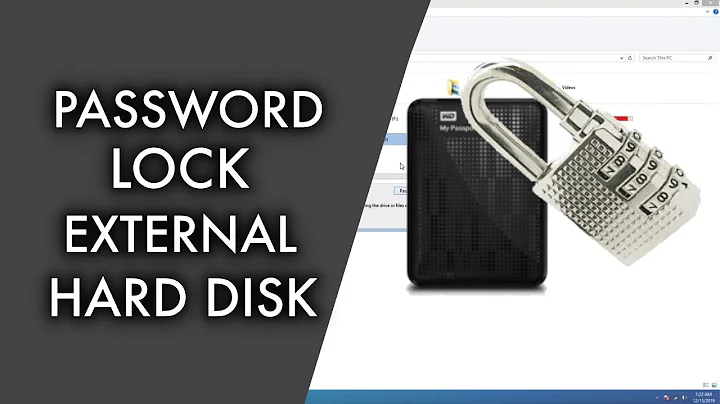Password protect a hard drive partition
Do each of the remote users (the users logged into the L300s) log in to user accounts on the server machine?
If they do, you could add each of the student accounts to a Studentsgroup,then set permissions on each partition so that the Students group (and thus all the student accounts inside it) are explicitly denied acess to those partitions.
Students attempting to access the partitions will receive an Access Denied error should they attempt to access those partitions.
Creating a Local Group
These instructions assume a workgroup environment (ie. no Active Directory).
- Press Windows Logo Key + R to open the Run dialog
- type
lusrmgr.mscinto the Run dialog and click OK - On the left hand side of the
Local Users and Groupswindow right click theGroupsfolder and chooseNew Group. - Name the group Students. Enter an appropriate description in the Description field.
- Click the Add button to add user accounts to the Students group
- In the object names text box enter the user names of each of the student user accounts seperated by a semicolon (;)
- Click Check names. If all of the names are correct, the computer name will be appended and they will be underlined as per this screenshot:

- Click OK to close the dialog, You should see the added members in the Members list. Click the Close button.
- The group has been created. Close Local Users and Groups
Deny Group Access To Pariitions
You'll need to repeat these steps for each partition you want to deny access to
- Open Computer
- Right click the relevent drive and choose Properties
- Click the Security tab
- Click the Edit button
- Choose Add
- Type Students in the "Enter object names to select" textbox
- Click OK.
- Select the Student group from the "Group or user name" list
- Check the "Deny" checkbox next to "Full Control" checkbox. All the other permissions will have their Deny columns checked automatically
- Click ok
Related videos on Youtube
Anonymous
Updated on September 18, 2022Comments
-
Anonymous almost 2 years
I run a computer training institute. I have deployed 15 N-Computing L300 devices, connected to a single server, an Intel core i7 with Windows 7 Ultimate. The hard drive has 3 partitions.
Along with the administrator account logged in on the server, other standard users are simultaneous logged in on the same server through the remote sessions on N-Computing L300s. I want to password protect the partitions D & E, so that each time any user tries to access the drive, it prompts for the password, although it is opened by the administrator at the same time.
I have tried several softwares like "Folder Lock 7.1", "LockMyDrive 4.0", "Disk Password Protection" etc. They password protect the drive until it is unlocked. Once it is unlocked by the administrator & is in use, it can easily be accessed by other users at that time.
Can anyone suggest me a software which can fulfill my requirements. The same is required for folders as well.
-
Karan almost 11 yearsHave you tried setting permissions so standard users can't access those locations?
-
Logman almost 11 yearsAs Karan mentioned, create 2 user/security groups... add the appropiate users to each group. And then use Allow/Deny on the groups that are applied to the partitions.
-
Anonymous almost 11 yearsAnd how exactly shall i do it ? Could you please explain me step-by-step?
-
pyker almost 10 yearsis this question of any help to you? superuser.com/questions/238235/…
-
 Kamil over 9 years"I run a computer training institute" - and you don't know that you just can set access permissions in NTFS? What kind of computer training institute is this? :)
Kamil over 9 years"I run a computer training institute" - and you don't know that you just can set access permissions in NTFS? What kind of computer training institute is this? :) -
Crippledsmurf over 9 yearsI agree this is something someone in an IT role should know, but I've also seen environments where one would assume internal IT would exist, and does not, so non-technical people end up doing an admin's job. Since OP has made some effort to try and solve this, I've expanded my answer with some instructions.
-




